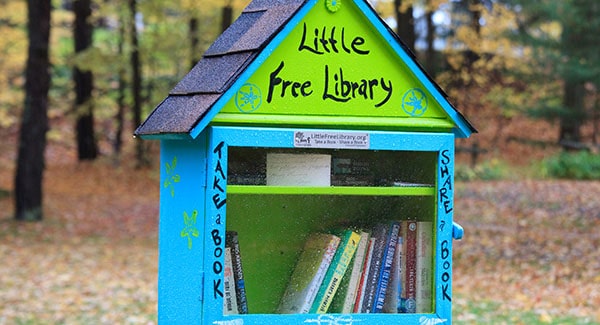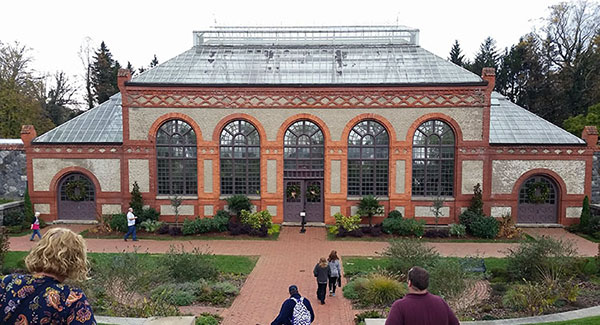Last Updated on June 6, 2023
One of the most important things to consider when you’re thinking about moving is the quality of the schools. The schools around a home affect its value and its appeal to potential future buyers. Even if you don’t have children or they are out of the nest, you want to be aware of the quality of education in your area.
Western North Carolina’s public school systems and private schools consistently rank among the state’s best. The public schools that serve the area include:
- Asheville City Schools.
- Buncombe County Schools.
- Haywood County Schools.
- Henderson County Schools.
- Madison County Schools.
- Polk County Schools.
- Transylvania County Schools.
- Yancey County Schools.
We examine the highlights of schools across WNC below, adapted from our annual Welcome to Western North Carolina magazine. Request your free copy today!
City of Asheville
Asheville City Schools has nearly 4,400 students, having experienced a significant increase in enrollment in the last decade. Each of the elementary schools is a “magnet school,” meaning that parents may apply for admission to the school that best suits their child’s interests.
Claxton Elementary (450 students) integrates the arts and humanities into curriculum teaching through drama, dance, music, visual arts, and creative writing. Hall Fletcher Elementary (370 students) emphasizes science, math, and technologies through course work such as science lab, its greenhouse, and “HopSports,” which works technology into physical education. Ira B. Jones, a “Global Scholars school” of around 500 students, includes Spanish, multicultural awareness, and environmental stewardship in its studies. Isaac Dickson, an experiential learning school of over 500 students, bases its core principles on the educational ideals of Dewey, Piaget, and Montessori. The School of Inquiry and Life Sciences has 320 students, while Lucy S. Herring Elementary School invites its 477 students to study the people and cultures of the world and examine their relationships with the natural environment.
The number of students enrolled at Asheville Middle School is close to 800. And Asheville High School is a four-year school of more than 1,000 students. It occupies a stately stone building designed by Art Deco master Douglas Ellington.
Buncombe County Schools
Buncombe County’s system encompasses 23 elementary schools, seven middle schools, and six comprehensive high schools. It also boasts a middle and early college and a STEM school.
Reflecting the diverse nature of the area’s population, Buncombe County Schools serves children of many different ethnic backgrounds. In fact, students across the district speak more than 55 different languages. Buncombe County Schools is one of the largest school systems in the state and the largest in Western North Carolina with more than 25,500 students. The system employs nearly 4,000 people, also making it the county’s second largest employer.
Among Buncombe County Schools’ education initiatives is “Learn and Earn Online,” a program that allows sophomores, juniors, and seniors the opportunity to take online college-level courses taught by instructors from Asheville-Buncombe Technical Community College. Students may also take classes not offered at their high schools through North Carolina Virtual Public School, which sets up coursework, group discussion, and student-teacher interaction via the Internet.
The county’s “graduation initiative” put into motion long-term changes to improve graduation rates. Since its inception, the program has drastically decreased the dropout rate in the system.
Reynolds High School hovers around 1,280 students. Early College, one of the highest performing schools in the region, is home to 270 students.
Haywood County Schools
“Success for today, preparation for tomorrow, and learning for a lifetime” sums up the vision of Haywood County Schools. With schools far smaller than the state average, the system is able to offer its more than 7,200 students a great deal of personal attention. More than two thirds of the system’s schools were state-designated “Schools of Distinction” last year, compared with less than one third for all state school systems as a whole.
Clyde, Hazelwood, Jonathan Valley, Junaluska, and Meadowbrook elementary schools, as well as Waynesville Middle School and Pisgah and Tuscola high schools, were all “Schools of Distinction”. That means that at least 80% of students performed at or above grade level on end-of-grade tests. Riverbend Elementary School and Haywood Early College were recognized as “Honor Schools of Excellence” for having more than 90% of their students score at or above standard on mandated state tests. In recent years, Haywood Early College was honored as a “National Blue Ribbon School.”
The biggest institutions in the district are Pisgah High School in Canton (1,010 students) and Tuscola High School in Waynesville (975 students).
Henderson County Schools
Henderson County Schools’ vision is “that every student will achieve success and graduate as a life-long learner, globally competitive, prepared for career, college, and life.” With more than 13,500 students in the district, the system has one of the highest graduation rates in the state. Its four middle schools have been nationally designated as “Schools to Watch” because of their emphasis on strong academics and their sensitivity to their students.
As the biggest in the district, West Henderson High School has 1,080 students. With around 1,100 students, North Henderson High School is the second-largest institution in the district. Home to 190 students, Henderson County Early College is the top performing school in the district.
Henderson County Schools owns Historic Johnson Farm, a heritage education center, making it one of only three school systems in the United States to own a farm. The farm, open to the public and listed on the National Register of Historic Places, teaches students about farm life on its 15 acres of farmland, forest, fields, and streams. The school system also has the Bullington Center, a 12-acre horticultural education center that holds workshops to teach children and adults about gardening and plant science.
Madison County Schools
Madison County Schools has around 2,300 students who attend two early childhood education centers, four elementary schools, one middle school, one high school, and one early college high school. With some of the best educational facilities in the state, the board of education has led an effort to rebuild and/or remodel all facilities over the last decade.
Compared to state averages, Mars Hill Elementary (490 students) had higher testing scores in almost all of its classroom testing. Recently, the school was recognized as a “School of Progress” for its high academic growth numbers. Madison High School has also been designated a “School of Distinction.”
Jackson County Schools
Tracing its history to the mid-1880s, Jackson County Schools has nine schools, all configured to meet the needs of a large county with few concentrations of population: Smokey Mountain Elementary, which has students from Pre-K to eighth grade; Blue Ridge, a Pre-K–12 school (one of the few in the state); the K–8 schools of Fairview, Cullowhee, and Scotts Creek; the Pre-K–12 School of Alternatives for students with special needs; Smoky Mountain High School; and Blue Ridge Early College and Jackson County Early College.
The largest institution in the district, Smoky Mountain High School, enrolls 848 students and has been named a “School of Distinction.” In fact, half of the system’s schools have been designated “Schools of Distinction.” One of the highest performing academic institutions in the district, Jackson County Early College, enrolls more than 140 students.
The schools have joined other county agencies in challenging its staff and 3,690 students to improve their health through fitness.
Polk County Schools
Polk County Schools serves about 2,100 students in a system of seven schools that ranks high on state and federal lists of academic achievement.
County schools include Tryon Elementary, Saluda Elementary, Sunny View Elementary, Polk County Middle, Polk County High, and Polk Central. An academic highlight of the district, Polk County Early College enrolls around 70 students. High school students can take advanced placement courses and earn college credits through several iSchool courses offered in conjunction with University of North Carolina–Greensboro.
Saluda was recognized in 2012 as a “National Blue Ribbon School,” becoming one of only 269 nationwide systems to receive the honor. Sunny View and Tryon elementary schools were named “National Blue Ribbon Schools” by the U.S. Dept. of Education in previous years. In recent years, Tryon and Saluda elementaries and Polk County Early College were named “Schools of Excellence” by the North Carolina Department of Public Institution. Polk Central and Polk County Middle and High Schools received marks as “Schools of Distinction.” U.S. News & World Report magazine once named Polk County High School a “Bronze Medal School” in its report on America’s best high schools.
Transylvania County Schools
The Transylvania County school system operates four elementary schools, two middle schools, two high schools, and one alternative school. The main academic institution, Brevard High School, enrolls around 730 students. Transylvania County consistently ranks among the top school systems in North Carolina. Student attendance is among the best in the state.
In conjunction with the Brevard Chamber Orchestra, the system implemented a strings program in its elementary schools. It also started a “New Century Scholars” program that provides support and college tuition for at-risk students. To help prepare the district’s more than 3,400 students for careers in the computer age, the school system offers classes in network engineering and webpage development, as well as a Cisco Academy.
The school system has also made steady improvement in its student-to-adult ratio. It has sought and received state and federal grants for technology, reading improvement, exceptional children’s programs, school resource officers, library books, juvenile justice programs, and quality management practices.
Yancey County Schools
Yancey County Schools received the “North Carolina Academic Growth Award” in 2016–2017. With nine schools, the district is home to more than 2,150 students.
Mountain Heritage High School in Burnsville added the above honor to its two previous “School of Distinction” awards. Bald Creek Elementary School was also named a “National Blue Ribbon School.”
All real estate is local. In order to make confident real estate decisions, it’s important to have timely and neighborhood-specific information. Contact us today to speak with an Allen Tate/Beverly-Hanks real estate agent about buying homes and land within certain Western North Carolina school districts. View all Allen Tate/Beverly-Hanks real estate listings.





